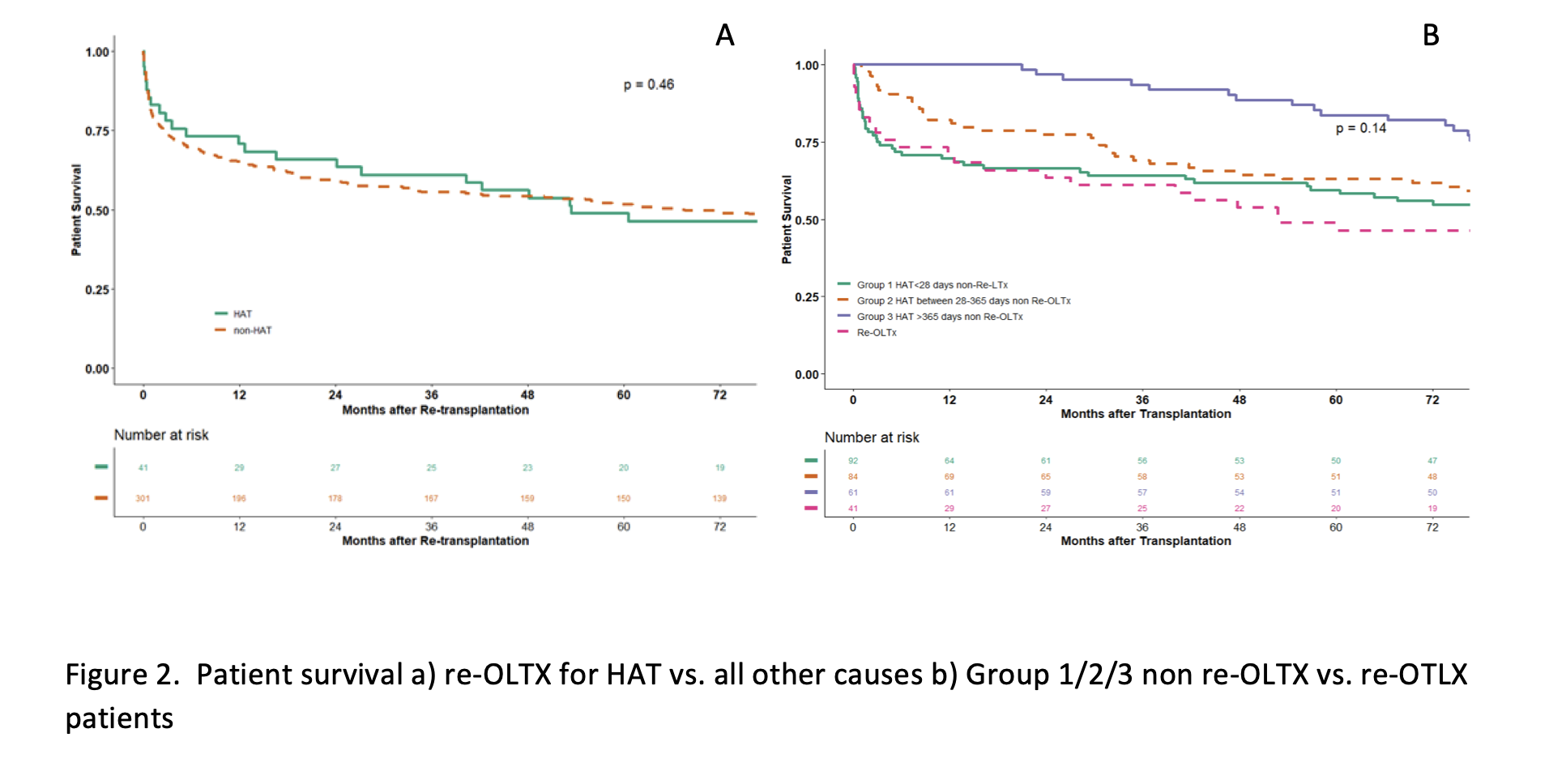Hepatic Artery Thrombosis and Liver Transplantation: Patient Management and Candidate Selection for Re-transplantation
Baylor University Medical Center, Dallas, TX
Meeting: 2021 American Transplant Congress
Abstract number: LB 81
Keywords: Hepatic artery, Liver grafts, Liver transplantation, Retransplantation
Topic: Clinical Science » Liver » Liver: Retransplantation and Other Complications
Session Information
Session Name: Liver: Retransplantation and Other Complications
Session Type: Poster Abstract
Session Date & Time: None. Available on demand.
Location: Virtual
*Purpose: Hepatic artery thrombosis (HAT) is a severe complication in liver transplantation (OLTX). Re-OLTX for patients with HAT has been met with controversy due to uncertain long-term outcomes. Patient selection for re-OLTX has not been defined.
*Methods: This is a retrospective review of patients undergoing OLTX between 1985-2016. A total of 4172 OLTX were performed, 265 identified with HAT. Recipient demographics, complications, allograft/patient survival, and re-OLTX outcomes were analyzed. OLTX cases were then divided into: Group 1 (HAT <28 days), Group 2 (28 days-1year) and Group 3 (> 1 year).
*Results: Graft loss rate for patients with HAT within the first year of OLTX was 67.3%, while the mortality rate was 80.2%. Group 1 patients most commonly presented with sepsis, while Group 3 patients mainly presented with biliary complications. On multivariate analysis, recipient age and antibiotic usage were significant in patient survival. HAT patient survival was lower than non-HAT patients, with Group 1 patients having the lowest patient survival within the first two years (Figure 1). Patient survival for re-OLTX was similar for patients undergoing re-OLTX for indication of HAT, versus all other causes (Figure 2). Group 1 patient survival was lower at all time points compared to all other groups for patients with or without re-OLTX. Group 2 patient survival at 1 month, 3 months, 1 year were similar with and without re-OLTX, however, the 5-year survival with re-OLTX was significantly lower. Group 3 patients with and without re-OLTX had similar survival at all time points.
*Conclusions: Graft and patient survival are critically dependent on the time of HAT diagnosis, and the entire clinical picture should be considered prior to re-OLTX, as this may prove detrimental to patient survival. Sepsis, antibiotic therapy, and recipient age are important when considering re-OLTx in Group 1 patients. Long-term survival of Group 2 patients should be considered when discussing re-OLTX in this subset of patients. Group 3 patients should be treated with non-surgical management. In the face of donor shortage, it is imperative to determine the role of re-OLTX in management of HAT patients.
To cite this abstract in AMA style:
Fernandez H, Wall A, Gupta A, Martinez E, Bayer J, McKenna G, Onaca N, Ruiz R, Spak C, Testa G. Hepatic Artery Thrombosis and Liver Transplantation: Patient Management and Candidate Selection for Re-transplantation [abstract]. Am J Transplant. 2021; 21 (suppl 3). https://atcmeetingabstracts.com/abstract/hepatic-artery-thrombosis-and-liver-transplantation-patient-management-and-candidate-selection-for-re-transplantation/. Accessed January 4, 2026.« Back to 2021 American Transplant Congress


